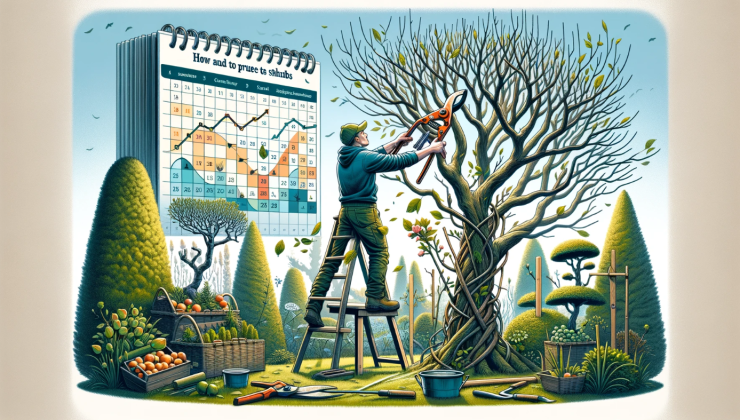Pruning is an essential practice for maintaining the health, appearance, and growth of trees and shrubs in your garden or landscape. When done correctly, pruning can enhance the beauty of your outdoor space and promote the overall well-being of your plants. However, improper pruning can lead to various issues, including stunted growth, disease susceptibility, and an unsightly appearance. To help you make the most of your pruning efforts, this article will guide you on how and when to prune your trees and shrubs.
Understanding the Basics of Pruning
Before delving into the specifics of when and how to prune, it’s important to understand the fundamental principles of pruning:
- Pruning Objectives: Pruning serves various purposes, such as improving plant health, shaping the plant, removing dead or diseased branches, and controlling size. Identify your specific goals before starting the pruning process.
- Timing: The timing of pruning plays a crucial role in the success of the operation. Different trees and shrubs have varying optimal pruning times, which can depend on the species, climate, and region.
- Pruning Tools: It’s essential to use the right pruning tools, such as sharp pruning shears, loppers, and pruning saws, to ensure clean cuts that minimize damage to the plant.
When to Prune
Pruning timing largely depends on whether the plant is a tree or a shrub and whether it blooms in spring or summer:
1. Spring-Blooming Trees and Shrubs: These should be pruned immediately after flowering. Pruning them during dormancy in late winter or early spring may remove flower buds and reduce the following year’s bloom.
2. Summer-Blooming Trees and Shrubs: Prune these during late winter or early spring before new growth begins. This allows the plant to allocate energy to the new growth and promotes vigorous flowering.
3. Trees and Shrubs Prone to Diseases: Prune these during the dormant season (late fall or winter) when the risk of spreading diseases is lowest.
4. Dead or Diseased Branches: Remove these as soon as you notice them, regardless of the time of year.
How to Prune
Proper pruning techniques are essential to ensure the health and aesthetics of your trees and shrubs:
1. Make Clean Cuts: Always use sharp, clean pruning tools to make smooth cuts. Ragged or torn cuts can lead to disease entry points.
2. Cut at the Right Angle: When removing a branch, cut just outside the branch collar, which is the swollen area where the branch attaches to the main stem. Avoid cutting too close or leaving a stub.
3. Remove Suckers and Water Sprouts: These are fast-growing, weak shoots that can drain energy from the plant. Prune them as soon as they appear.
4. Thinning vs. Heading: Thinning cuts involve removing an entire branch or stem back to its point of origin, which is typically a larger branch or the trunk. Heading cuts, on the other hand, involve cutting a portion of a branch, stimulating new growth below the cut. Use these methods depending on your pruning objectives.
Conclusion
Pruning trees and shrubs is a valuable skill for any gardener or homeowner, but it requires careful consideration of timing and technique. By understanding when and how to prune your plants properly, you can maintain their health, shape, and beauty while avoiding potential pitfalls. Remember that each plant species may have specific requirements, so it’s essential to research the particular needs of your trees and shrubs for the best results. With the right knowledge and approach, your garden or landscape can thrive and flourish year after year.






Add comment